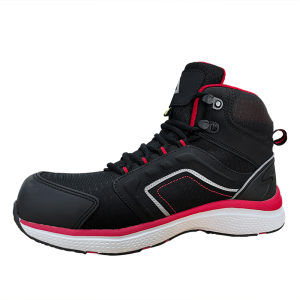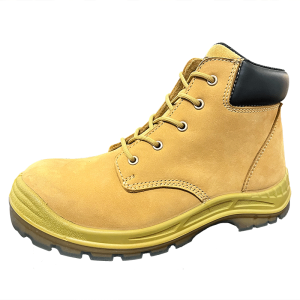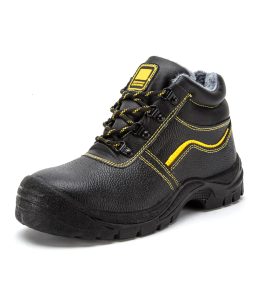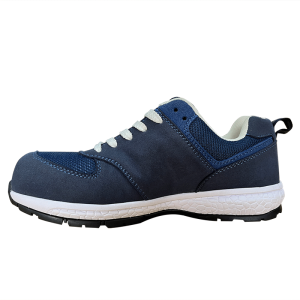Safety shoes are essential protective gear used to safeguard our feet from potential hazards in the workplace. However, like any other equipment, safety shoes have a limited lifespan.
Understanding the lifespan of safety shoes is crucial for maintaining the highest level of protection and ensuring the wearer’s safety.
This article will explore the factors that affect the lifespan of safety shoes and provide valuable insights to prolong their usability.
Quality and Material Durability:
The overall quality and durability of materials play a vital role in the lifespan of safety shoes. Well-constructed safety shoes made from high-quality materials tend to have a longer lifespan compared to those made from lower-quality materials. When purchasing safety shoes, it is crucial to choose reliable brands renowned for their quality and durability.
Frequency of Use:
The frequency of use directly impacts the lifespan of safety shoes. Individuals who wear safety shoes daily in demanding work environments experience wear and tear faster than those who wear them occasionally or in less harsh conditions. When evaluating the lifespan of safety shoes, the intensity and duration of use should be considered.
Work Environment:
The work environment is a significant factor affecting the lifespan of safety shoes. Different industries and workplaces may entail varying degrees of hazards and wear on shoes. For example, individuals working in construction or heavy industrial settings may expose their safety shoes to chemicals, sharp objects, or extreme temperatures. Such environments accelerate wear and tear, reducing the lifespan of safety shoes.
Maintenance:
Proper maintenance is crucial for extending the lifespan of safety shoes. Regularly cleaning safety shoes, removing debris, and allowing them to dry after use can prevent the accumulation of dirt and debris, which may affect the shoe’s integrity. Additionally, following the manufacturer’s cleaning and storage guidelines can prolong the lifespan of safety shoes.
Inspection and Evaluation:
Regularly inspecting and evaluating safety shoes is essential for detecting any signs of wear or damage. It is recommended to frequently check for cracks, scratches, loose threads, or other visible signs of wear. Pay particular attention to the condition of the outsole, midsole, upper, and toe protection, as these areas are prone to pressure and wear. Conducting thorough inspections allows for timely identification of issues and necessary repairs or replacements.
Comfort and Proper Fit:
Comfort and proper fit have an impact on the usability and lifespan of safety shoes. If safety shoes are ill-fitting or cause discomfort, users may opt to replace them more quickly. Ill-fitting shoes can also increase pressure on specific areas, leading to premature wear and reduced lifespan. Ensuring the selection of properly sized safety shoes that provide adequate support and cushioning is essential for optimal comfort and durability.
Understanding the lifespan of safety shoes is crucial for maintaining continuous foot protection and safety. Factors such as quality, frequency of use, work environment, maintenance, inspection, and comfort all play significant roles in the overall lifespan of safety shoes.
By considering these factors comprehensively, individuals can make informed decisions regarding the lifespan and replacement of safety shoes. Remember, prioritizing the lifespan of safety shoes contributes to creating a safer work environment and protecting wearers from potential hazards.
However, over time and with increased usage, the functionality and protective capabilities of safety shoes may gradually diminish. This raises an important question: when should safety shoes be retired? This article explores how to determine the right time to retire safety shoes, ensuring reliable foot protection.
Appearance:
We can start by evaluating the appearance of safety shoes. Check for visible signs of wear, cracks, or damages on the shoe upper, sole, heel, and ankle support. If the shoe upper is torn, unable to provide sufficient protective coverage, the sole is significantly worn out, losing its slip-resistant feature, or the heel feels loose and unstable, these are clear indicators that the safety shoes should be retired.
Internal Support Structure:
In addition to appearance, the internal support structure plays a vital role in determining the retirement of safety shoes. Remove the insole and inspect the shoe’s internal support structure, including the shoe last, midsole, and insole. If the shoe last is deformed, the midsole loses stability, or the insole is severely worn out, these issues directly affect the shoe’s comfort and protective performance, signaling retirement.
Years of Use:
The number of years in use is a significant factor in deciding when to retire safety shoes. Typically, safety shoes have a normal lifespan of 6 months to 1 year. However, the actual lifespan depends on various factors such as frequency of use, work environment, and shoe quality. If you engage in high-intensity work or sports activities regularly or have low-quality safety shoes, it may be necessary to shorten their lifespan. Regularly assess the condition of the safety shoes and decide whether to retire or replace them accordingly.
Functional Testing:
Apart from appearance and years of use, functional testing can help determine when safety shoes should be retired. Perform different movements or simulate work scenarios to evaluate the shoe’s stability, slip resistance, and impact protection. If the shoes demonstrate noticeable defects or fail in terms of functionality during testing, such as loss of balance, slipping, or inadequate impact resistance, these are clear indications that the safety shoes should be retired.
Ensuring steady footing requires continuous attention to the condition and reliable protective performance of safety shoes. Employing evaluations based on appearance, internal support structure, years of use, and functional testing, we can determine when safety shoes should be retired and promptly replaced. Remember, it is our responsibility to protect our feet, and by using safety shoes in good condition, we can confidently and securely take each step forward.









